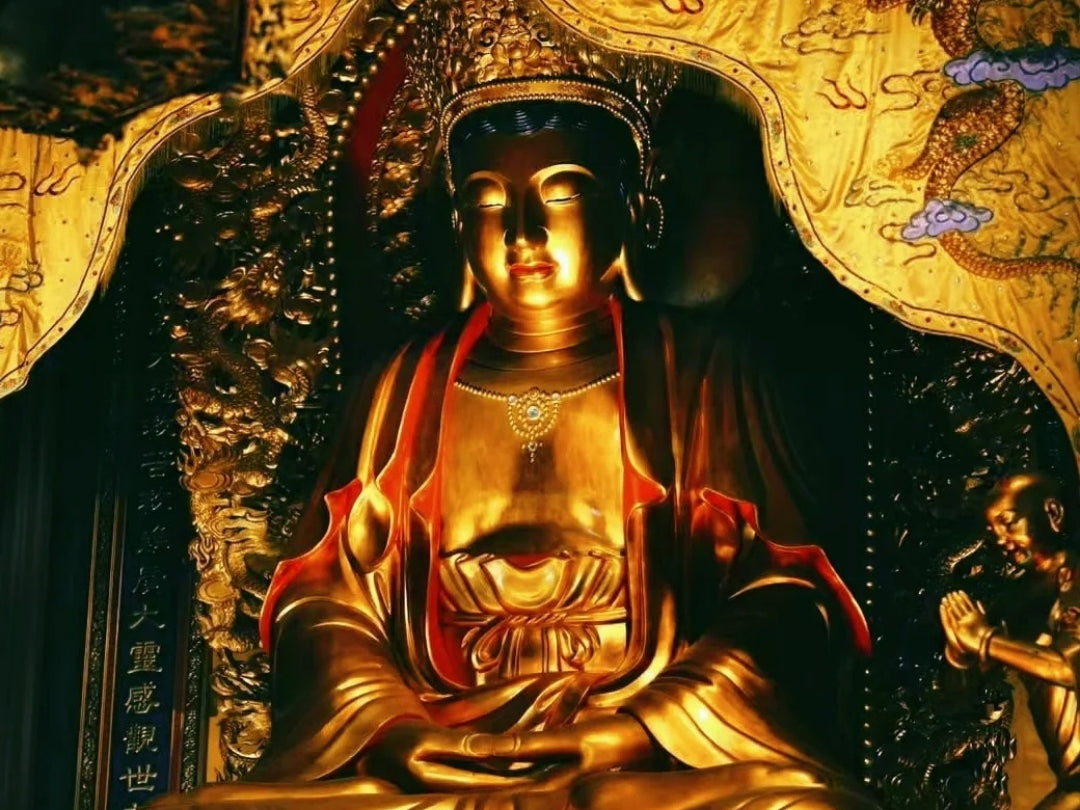In the annals of spiritual history, few tales resonate as vividly as Buddhism’s voyage from ancient India to the heart of China—a journey interwoven with myth, diplomacy, and cultural alchemy. For lovers of Tibetan Buddhist jewelry and handcrafted spiritual artifacts, this story isn’t just history; it’s the foundation of the symbols and craftsmanship that inspire collections like QiLing Aura’s Thangka pendants and sacred mala beads. Let’s explore the legendary “Golden Man” dream that sparked Buddhism’s Chinese odyssey and its enduring legacy in art and mindfulness.

The Dream That Bridged East and West
In 64 CE, Emperor Ming of the Han Dynasty awoke from a vision that would alter China’s spiritual landscape. He dreamed of a radiant golden figure—interpreted as the Buddha—floating above his palace, bathed in divine light. This celestial encounter, detailed in the Sutra of Forty-Two Chapters, spurred the emperor to dispatch envoys westward, culminating in the arrival of two Indian monks, Dharmaratna and Kasyapa Matanga, to Luoyang.
Their caravan carried not only sacred texts but a white horse bearing the first Buddhist sutras to China. This symbolic journey birthed the White Horse Temple, China’s oldest Buddhist monastery, and marked the dawn of a spiritual fusion that would inspire Tibetan Buddhist symbols for centuries.

Myth or History? The Debate Behind the Legend
While the “Golden Man” narrative is central to Chinese Buddhist lore, historians remain divided. Early records like the Book of Later Han omit the tale, leading scholars to speculate it was later embellished to legitimize Buddhism during political turmoil1. Yet, its cultural significance is undeniable.
-
Symbol Over Substance: The story reflects Han China’s openness to foreign wisdom—a theme mirrored in QiLing Aura’s interfaith spiritual jewelry, blending Tibetan motifs with universal themes of protection and enlightenment.
-
Political Pragmatism: Some theorize the tale served to unify a fractured empire, much like how handcrafted Buddhist artifacts today bridge modern chaos with timeless serenity.
Buddhism’s Artistic Evolution in China
From the Han Dynasty to the Tang Golden Age, Buddhism’s integration into Chinese culture was a dance of adaptation:
-
Early Syncretism: Buddhist deities merged with Daoist immortals, creating hybrid iconography seen in carved jade pendants and temple art.
-
Silk Road Influence: Traders and monks carried not just scriptures but artistic techniques—intricate metalwork, sandalwood carving—that inspire QiLing Aura’s Tibetan silver talismans.
-
Literary Flourish: The translation of sutras into Chinese paralleled the meticulous artistry of hand-painted Thangka jewelry, where every stroke carries intention.
Why This Legacy Matters for Modern Seekers
Buddhism’s 2,000-year dialogue with China isn’t mere history—it’s a living tradition that infuses mindfulness jewelry with depth:
-
Sacred Geometry: Mandalas and lotus motifs in Buddha pendants echo the cosmic order sought by Tang-era monks.
-
Material Symbolism: Just as the White Horse bore sutras, QiLing Aura’s natural agate mala beads channel earthy resilience and spiritual flow.
-
Cultural Continuity: The debate over Emperor Ming’s dream mirrors today’s quest for authenticity in handmade spiritual accessories—where craftsmanship transcends time.
Carry the Golden Vision Forward
Explore Our Favorites:
-
Silk Road Mala Bracelet: Carnelian and sandalwood beads, symbolizing the fusion of Indian and Chinese spiritual paths.
Ready to wear a piece of this cross-cultural saga? Discover Our Buddhist Jewelry Collection






